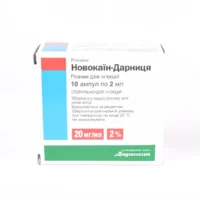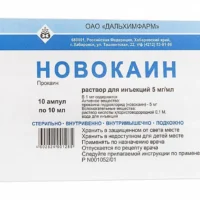Description
Novocain (Novocaine) Solution for Injections 2.5 mg/ml. 200 ml
Ingredients
- Active ingredient: Novocain (Procaine) 2.5 mg/ml.
Dosage
- Dosage: As directed by a healthcare professional. Do not exceed the recommended dose.
Indications
- Indicated for: Local anesthesia for various medical procedures.
Contraindications
- Do not use if: Allergic to procaine or any other ingredients in the solution.
Directions
- Administered by a healthcare provider.
- Follow all instructions for safe use.
Scientific Evidence
- Pharmacological Effects: Novocain works by blocking the transmission of nerve impulses, leading to temporary loss of sensation in the targeted area. This action is beneficial for pain management during medical procedures.
- Interactions: Novocain may interact with certain medications. Consult with a healthcare provider before use.
Additional Information
Novocain has been widely used in medical practice for its efficacy as a local anesthetic. Clinical trials have demonstrated its effectiveness in providing pain relief during minor surgical procedures, dental work, and other medical interventions. Research studies have shown that Novocain has a rapid onset of action and a relatively short duration of effect, making it a preferred choice for many healthcare providers.
In comparative effectiveness studies, Novocain has shown similar efficacy to other local anesthetics with a well-established safety profile. Its affordability and widespread availability make it a practical choice for healthcare settings where local anesthesia is required. Always consult with a healthcare professional for personalized recommendations and safe usage of Novocain solution for injections.




